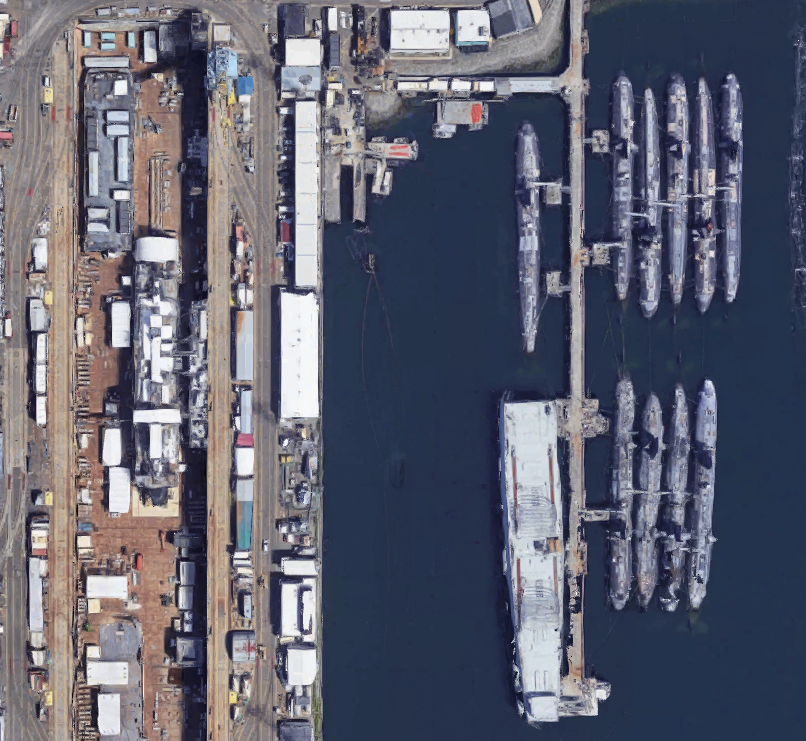
Decommissioned nuclear carrier Enterprise (CVN-65) sits pier side at Newport News Shipbuilding following its decommissioning in February 2017. US Navy Photo
THE PENTAGON — A brewing regulatory fight between the Navy and the Nuclear Regulatory Commission over who should oversee a possible commercial contract to dismantle the hull of the former USS Enterprise (CVN-65) could ultimately cause the project’s price tag to balloon well above the current $1 billion estimate.
Controlling costs and preventing a log-jam of nuclear refueling and maintenance work on decommissioned nuclear surface ships and submarines were cited as reasons the Navy would consider using a private contractor to dismantle the nation’s first nuclear-powered aircraft carrier, according to an August Government Accountability Office report.
However, civilian regulators with the federal Nuclear Regulatory Commission (NRC) aren’t keen on overseeing the dismantlement of Enterprise.
The NRC position is, “regulatory responsibility for the safe processing and disposal of Navy ships falls to Naval Reactors under its Department of Energy authority,” reads the report.
Using a commercial shipyard to take Enterprise apart would potentially save hundreds of millions of dollars and shave as many as five years off the project completion time, according to the GAO.
If the Navy contracted a commercial yard do take Enterprise apart, the Navy’s position is civilian regulators should monitor the work of a civilian company, essentially leaving the Navy out of the process.
Meanwhile, the NRC maintains the Navy, under the Naval Reactors office, already has a proven track record of serving as the regulatory authority for nuclear-powered ship dismantling, according to the GAO report. Under this authority, the Navy has regulated the dismantlement of about 130 reactors taken from nuclear-powered submarines and cruisers.
“Naval Reactors is charged with cradle-to-grave responsibility for our nation’s naval nuclear propulsion material,” the GAO report states.
The Navy’s incentive to send Enterprise to a commercial shipyard is not just based on cost. The Puget Sound Naval Shipyard, where nuclear dismantling work occurs, already has a growing queue of projects, according to the GAO report. Puget Sound is used for routine maintenance work and is due to soon start taking apart what will become a steady flow of retiring nuclear-powered submarines.

Backlog of Navy nuclear submarines and half of former USS Long Beach (CGN-9) awaiting dismantlement at Puget Sound Naval Shipyard, Bremerton, Wash. Google Image
“The CVN-65 dismantlement and disposal work could affect the shipyard’s ability to complete active fleet maintenance,” the GAO report states. “We found that the addition of the CVN-65 dismantlement and disposal would add almost a year’s worth of work across the estimated 10-year dismantlement and disposal period to an already busy shipyard that has demonstrated difficulties in accurately projecting its future work.”
The Puget Sound shipyard already has a backlog of 10 nuclear-powered submarines and the ex-USS Long Beach (CGN-9) in storage waiting to be dismantled and recycled. An additional three nuclear-powered submarines are pier-side awaiting dismantling, the GAO report states.
The current disagreement between regulators is also creating a situation the GAO reports says prevents commercial shipyards from being able to accurately predict final costs of dismantling Enterprise. Settling the argument, the GAO report states, “would also help ensure the Navy’s selection of a dismantlement and disposal plan for CVN-65 is informed by well understood regulatory expectations and cost and schedule estimates that reflect those expectations.”
The current disagreement between regulators is about more than whether the Navy or NRC monitors the dismantling of Enterprise. With 10 nuclear-powered Nimitz-class aircraft carriers due for decommissioning, defueling and dismantling over the next half-century, the regulatory precedent set now can be long-lasting.
“The precedent-setting nature of the CVN-65 dismantlement and disposal adds a level of risk and heightens the importance of having sufficient accountability measures to facilitate oversight. There is greater potential for unexpected challenges to arise because a nuclear-powered aircraft carrier has not been dismantled and disposed of before,” the GAO report states. “Additionally, CVN-65 provides an opportunity to establish a foundation for management and oversight of future aircraft carrier dismantlement and disposal efforts, with the first of 10 Nimitz-class carriers expected to reach the end of its service life in the next decade.”
